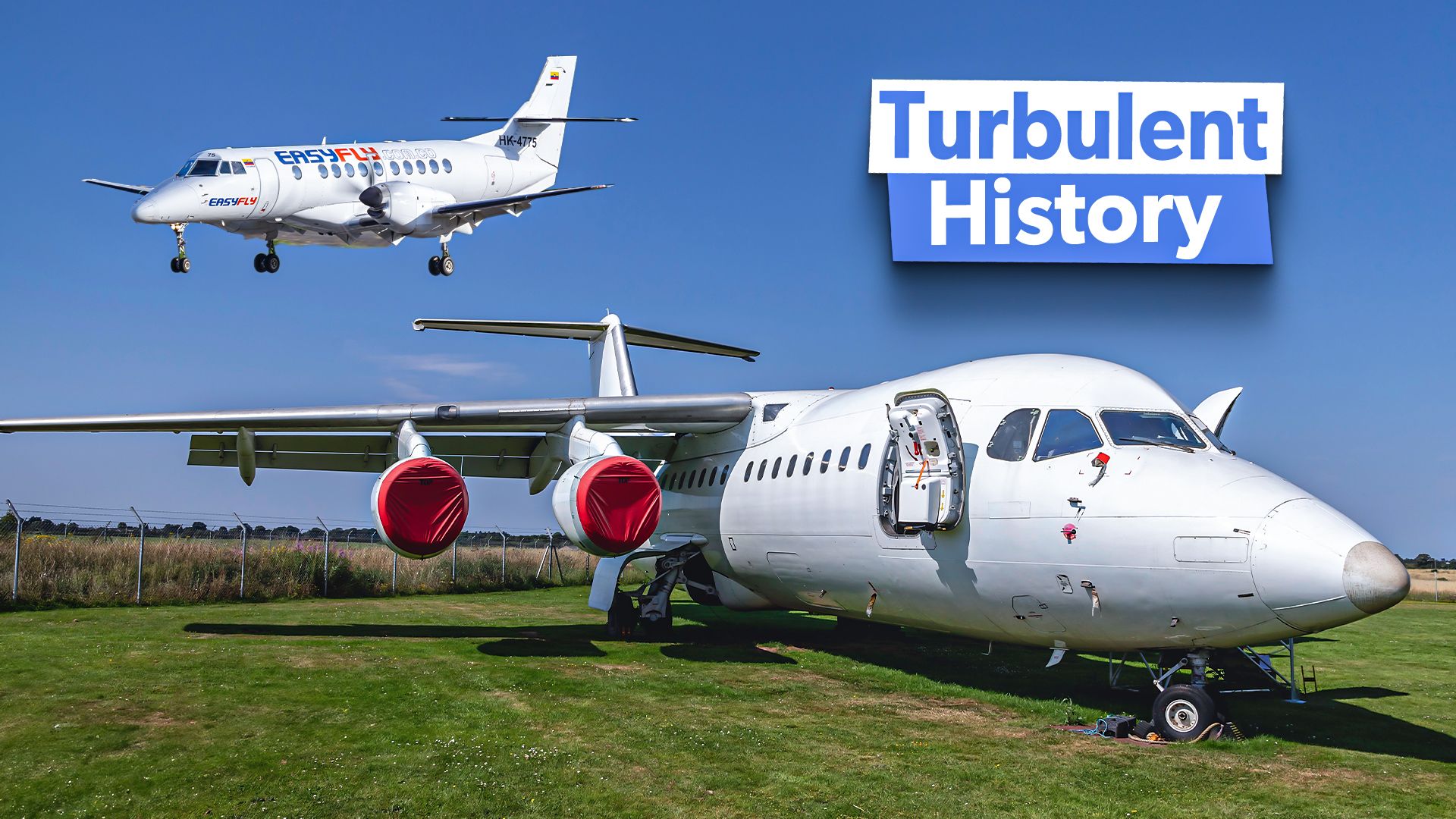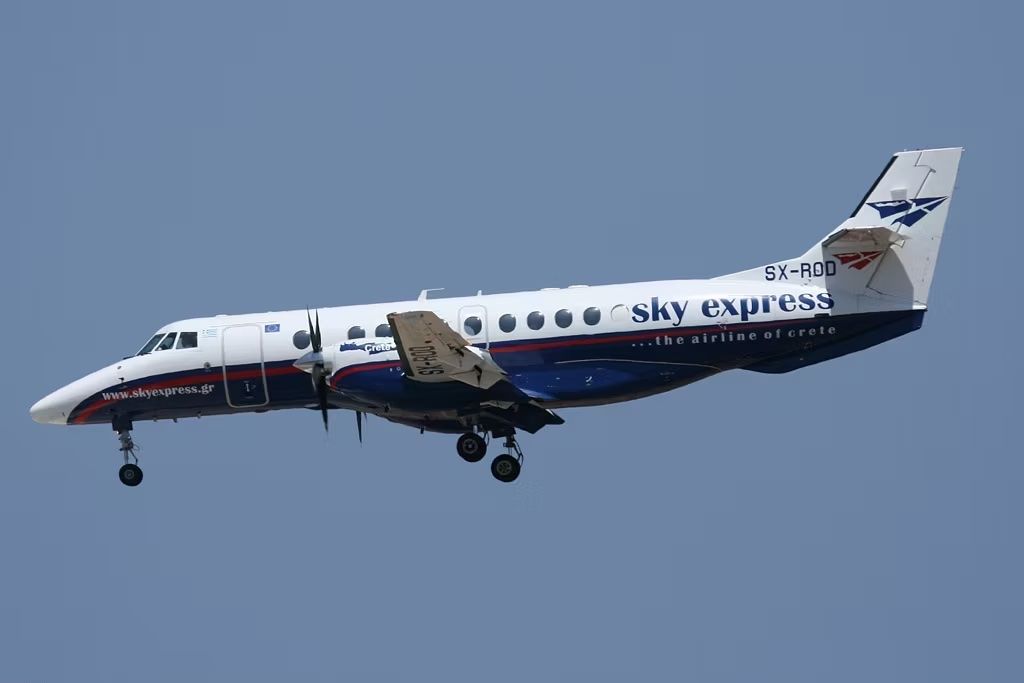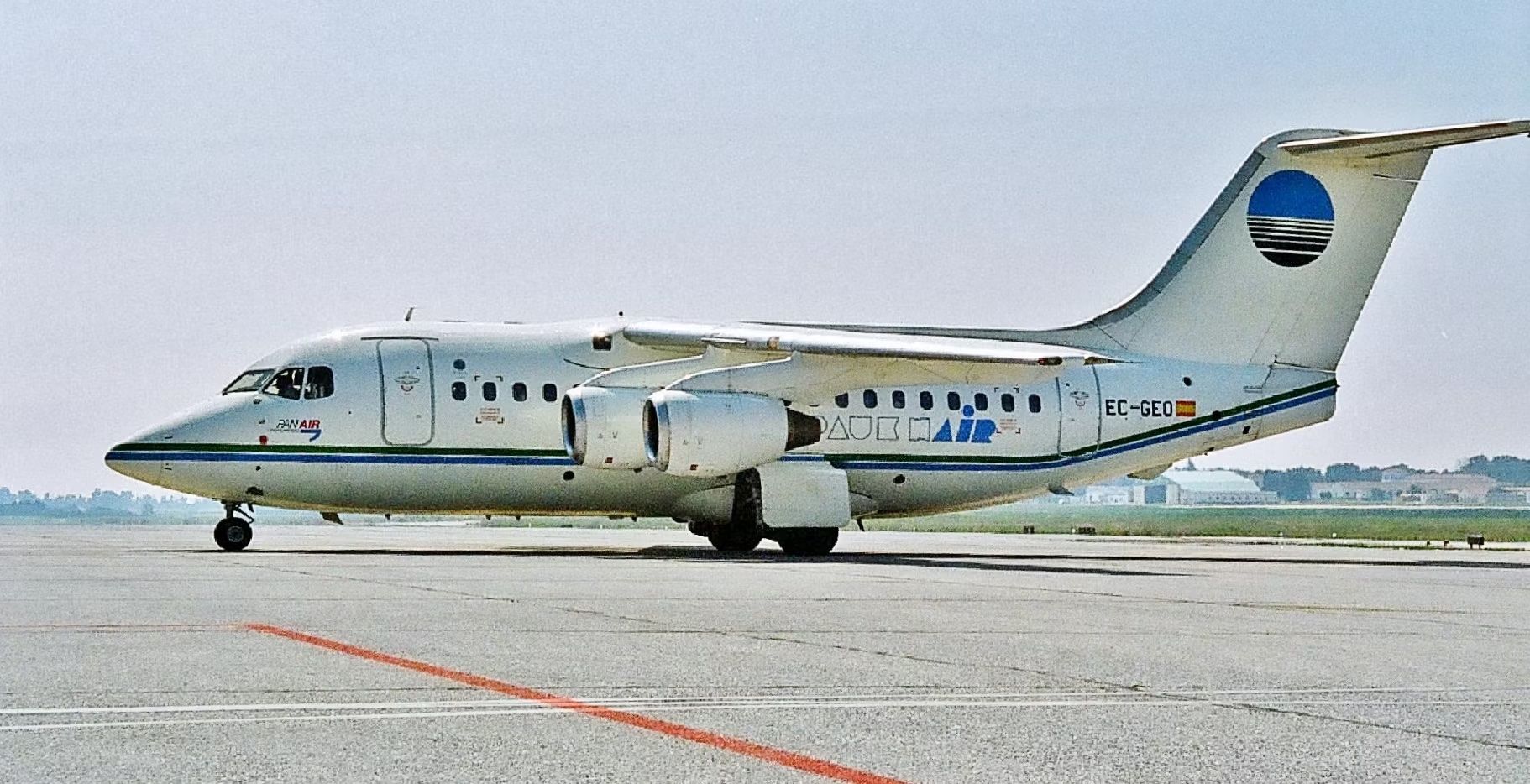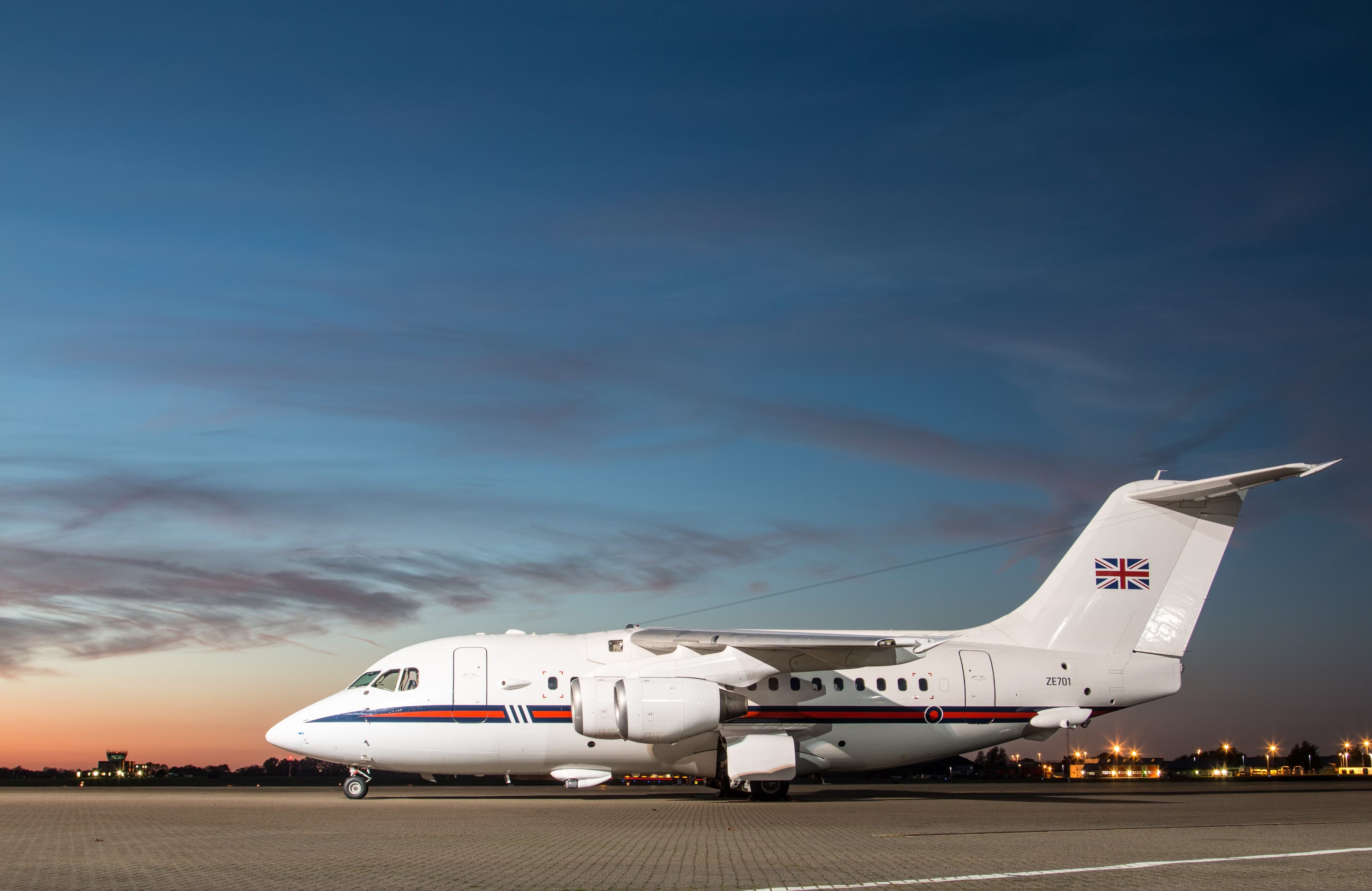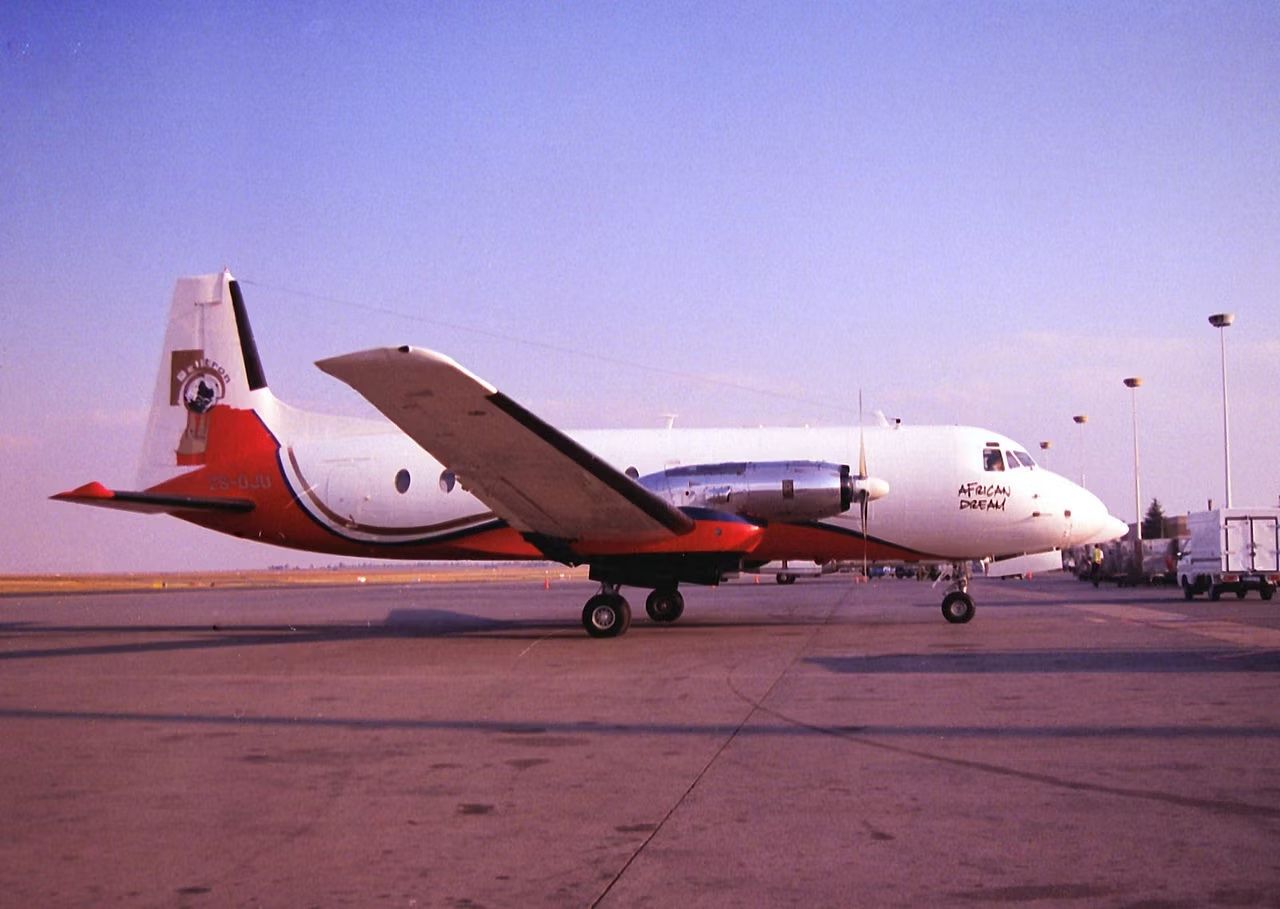Formed in 1977 by the merger of several major British manufacturers, British Aerospace
was the final independent English commercial planemaker to attempt to make its mark on the regional aircraft market. The company, which rose from the ashes of Hawker Siddeley, Scottish Aviation, and the British Aircraft Corporation, inherited its two major product lines due to the mergers that led to its formation.
Over the next few years, the company would consolidate its product lineup and begin offering upgraded versions of legacy aircraft from the manufacturers it emerged from. Throughout the 1980s and 1990s, British Aerospace delivered hundreds of aircraft, many remaining in service across the continent for decades.
However, by the turn of the millennium, British Aerospace’s commercial aircraft ultimately proved to be money losers. Amid financial difficulties, the company decided to exit the regional market by 2001. Today, the company lives on as a major defense contractor and supplier to Airbus
as part of the massive BAE Systems conglomerate. In this article, we will look at what led to the demise of British Aerospace’s regional lineup.
Key aircraft families
As previously mentioned, the backbone of British Aerospace’s commercial offerings comes from the companies it inherited. This notably included four key aircraft families:
- The Scottish Aviation/Handley Page Jetstream
- The British Aircraft Corporation BAC 1-11
- The Hawker Siddeley 748
- The Hawker Siddeley 146
The first aircraft, the Jetstream, was a versatile, roughly 20-seat propellor-powered airliner originally developed by Handley Page but later acquired by Scottish Aviation, according to SkyBrary. The original Handley Page Jetstream sold poorly, with only 66 jets delivered.
However, British Aerospace greatly improved its design by producing the Jetstream 31 and the Jetstream 41. More than 400 such aircraft were delivered, making the program a noteworthy commercial success.
The manufacturer also inherited a relatively similar aircraft: the HS 748, a roughly 50-seat turboprop with a range similar to the Jetstream. Hawker Siddeley sold over 300 before production ended in 1967. British Aerospace, however, decided to manufacture an advanced version of the plane, the ATP, which performed poorly, only selling 65 units.
At the top of the regional jet market in terms of capacity, British Aerospace inherited a pair of similar aircraft, the BAC 1-11, which the British Aircraft Corporation had developed, and the Hawker Siddeley HS 146. The company quickly sought to end the 1-11 production, with the final units delivered in 1982 (although later jets would be produced under license in Romania).
The company instead chose to double down on the HS 146, which would soon be named the BAe 146 and is a striking quad-engine regional aircraft. The company chose to upgrade the original Hawker Siddeley design, introducing what would become known as the Avro Regional Jet, so named for a puppet manufacturer set up by British Aerospace to streamline the plane’s production.
The plane sold poorly, producing only 173 of the later variants. With sluggish sales and a weakening order book, the company eliminated its commercial manufacturing division in 2001.
So where did British Aerospace go wrong?
Despite a relatively competitive product offering, the manufacturer made a few critical errors along the way that ruined its potential for profitability. The company made a few crucial mistakes in its major markets, the 20-60 seats sector and the 70-100 seat one.
In the smaller market, the manufacturer had two different products at its disposal post-merger: the Jetstream and the Hawker Siddeley 748. While the Jetstream targeted the lower half of this market, the HS 748 was towards the higher end, making the two a relatively strong product pair.
Furthermore, this market segment was booming in the 1980s and 1990s, in which orders for 20-60 seat aircraft far surpassed those at the top end of the market, according to Eriksson and Steinhuis’ 2016 book The Global Commercial Aviation Industry. The challenge of producing two separate aircraft families in this market led to extremely high costs, and the company was slower to bring its jets to market than it could have been.
The company had multiple opportunities in the higher capacity market to compete with the BAC 1-11 and the BAe 146 (later the Regional Jet) program. It had smartly decided not to develop two separate families to target the identical market and chose to phase out the older 1-11 production.
The company’s decision to double down on the BAe 146 by developing the successor Regional Jet program also proved to be a tactical mistake. The aircraft’s four-engine design was not conducive to the market’s demands, which were unhappy with the gas-guzzling jet’s performance when new twin-engine alternatives entered the market in the 1990s.
Not only was the Regional Jet unideal, but it also hit the market at the wrong time, showing a lack of foresight on the manufacturer’s part. Demand for 70-100-seat regional aircraft was relatively weak during the 1990s and early 2000s and did not begin to take off until the mid-2000s. Undoubtedly, British Aerospace had decided to double down on the aircraft by predicting that the reverse would be true and that airlines would demonstrate their interest in this kind of plane much sooner.
British Aerospace was not the only manufacturer that attempted to target the 70-100 seat market during this period, with the Fokker 100 also entering service. Much like its British competitor, the aircraft failed to garner enough orders to turn a profit. Eventually, modern aircraft like the Embraer ERJ 170 and the Bombardier CRJ 700 could effectively capture this market in the mid-2000s.

